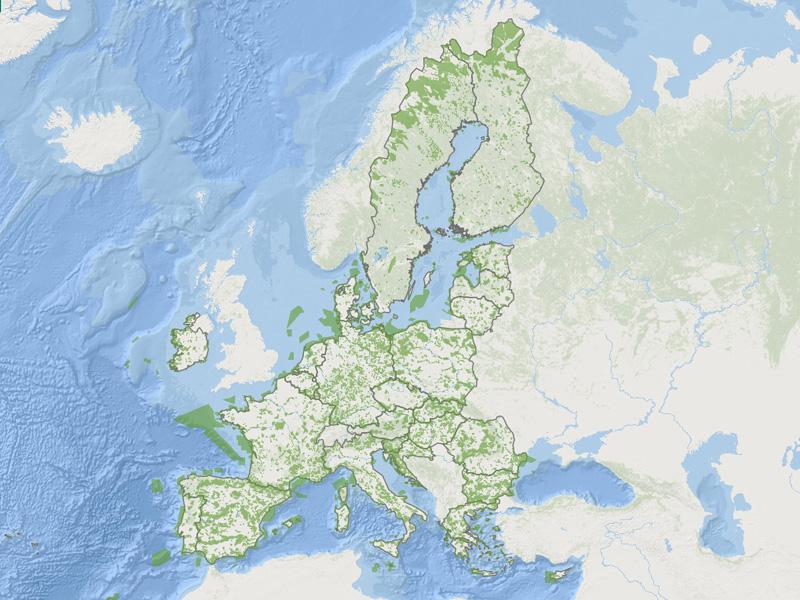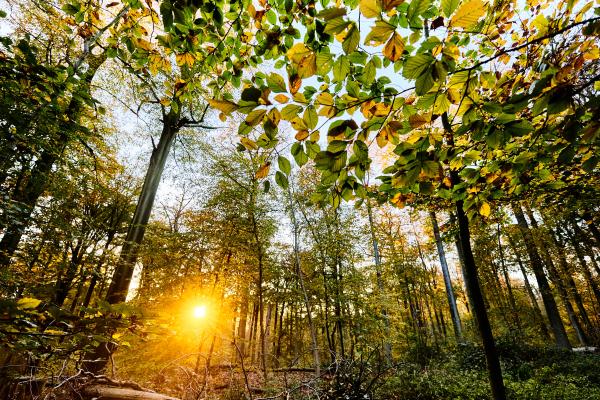There are over 27 000 nature sites protected by EU legislation. These form the Natura 2000 network.
Natura 2000 sites reflect Europe’s rich variety of wildlife and habitats. They cover almost one fifth of land and one tenth of surrounding seas - which is about the size of Spain and Italy combined.
The sites range in size from less then one hectare to hundreds of square kilometres. Sites include several strictly protected nature reserves, and habitat types such as forests, grasslands, wetlands and coastal and marine habitats.
For over 30 years, the Birds and Habitats Directives (the ‘Nature Directives’) have set out the overall legal framework for protecting and managing Natura 2000 sites.
See the interactive map of the Natura 2000 network.

Natura 2000 provides benefits for nature, for people and for the economy

Protects around 1 200 rare and threatened species and 230 habitat types
Provides a refuge for endangered species and rare habitats
Ensures their long-term survival and recovery

Provides us with vital services like fresh water, pollinating insects and protection against floods and coastal erosion
Plays a crucial role in tackling climate change
Is accessible - 65% of Europeans live within 5 km of a nature site

Provides ecosystem services worth around EUR €200–300 billion per year
Supports livelihoods - 4.4 million jobs depend directly on healthy ecosystems in Europe
Find out how EU countries designate Natura 2000 sites, and more about the EU’s biogeographical regions.
Rules and guidance for everyone involved in managing Natura 2000 sites. This includes the legal requirements of national governments, and guidance for local landowners and site managers.
Discover the procedure to follow when a new plan or project is likely to have a significant negative effect on a Natura 2000 site.
See how Natura 2000 sites are financed and how EU funding can be used. Learn more about the socio-economic benefits of healthy nature.
Rewarding excellence in the management of Natura 2000 sites.
Download the Natura 2000 logo and find out more about how and when to use it.
21 May is European Natura 2000 Day. More than 27,000 protected areas, that’s 27,000 reasons to celebrate!
Tools
Find Natura 2000 sites near you! Explore individual sites or group of sites, species and habitat types anywhere in the EU.
Several thousands of Natura 2000 sites have been targeted by LIFE project actions at least once. Find out more through this interactive map.
Discover where and how the UNESCO World heritage sites overlap with the Natura 2000 network sites. There are at least 83 World Heritage cultural sites and 25 World Heritage natural sites within or near Natura 2000 sites.
The latest data on all Natura 2000 sites, updated every year. See the graphs and statistics per country, and whether these are on land or at sea.
Want to know more about different ecosystems in Europe, their conservation status, and how the EU is effectively protecting them? Visit this website developed in partnership with the European Environment Agency.
Download the dataset – the data submitted by EU countries, updated every year.
Filter Natura 2000 sites by country, Directive and biogeographical region, or site code in the List.
Key publications
- The EU Birds and Habitats Directives - For nature and people in Europe (in EU languages)
- The Natura 2000 Newsletter (in EN, FR, DE, ES, IT, PL)
- Leaflet: The State of Nature in the EU (7 pages – in EU languages)
- Brochure: The State of Nature in the EU (39 pages – in EU languages)
- European Commission report: The state of nature in the European Union – Report on the status and trends in 2013-2018 of species and habitat types protected by the Birds and Habitats Directives (20 pages – in all EU languages)
- European Environment Agency full report: State of nature in the EU - Results from reporting under the nature directives 2013-2018 (140 pages – in EN)
- Natura 2000 in Cities (in EN)
- Financing Natura 2000: EU funding opportunities in 2021-2027 (in EN)
- Giving recognition to products and services that contribute to Natura 2000 (in EU languages)
- Farming in Natura 2000. In harmony with nature (in EN and IT)







